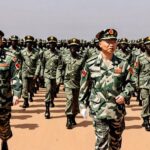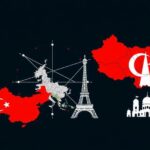China’s Influence on Myanmar’s Ethnic Armed Groups: A Strategic Pressure Play
China is pressuring the MNDAA, an ethnic armed group in Myanmar, to sever ties with Western-aligned opposition forces. This strategic move reflects China’s desire to maintain control over Myanmar’s political landscape and prevent U.S. influence. The MNDAA reaffirmed its allegiance to China, emphasizing the importance of avoiding cooperation with forces against Beijing. Analysts highlight China’s broader regional strategy focusing on stability and control, particularly concerning trade routes and investment security in the region.
China is exerting pressure on the Myanmar National Democratic Alliance Army (MNDAA), an ethnic armed group, to distance itself from opposition forces perceived as aligned with the United States. This pressure is emblematic of Beijing’s broader strategic interests in Myanmar, particularly concerning control over its political dynamics. The MNDAA, also known as the Kokang ethnic group, reaffirmed its allegiance to China through a public statement which criticized forming coalitions with any forces opposing Beijing’s interests. This reflects the group’s awareness of the delicate geopolitical landscape, especially given its strategic position along Myanmar’s northeastern border with China. Experts suggest that China’s actions, which include halting trade and supplies to the Kokang region, are intended as a warning against cooperation with the National Unity Government (NUG) – the democracy-promoting shadow government in opposition to the military junta in power. Analysts note that the MNDAA’s recent statement follows a significant warning from Chinese officials emphasizing the need to avoid civil unrest and external interference in Myanmar’s internal affairs. Beijing remains concerned about external influence in the region, primarily that of the United States. The decision to reinforce ties with China also aligns with local interests in managing the ethnic armed conflict while seeking economic stability, as China, the largest investor in Myanmar, aims to ensure a secure and uninterrupted trade route to the Indian Ocean. Despite overt public declarations of loyalty to China, it is suggested that the MNDAA may still establish tactical alliances with some resistance groups to protect its territorial interests. Furthermore, the NUG has professed its intention to safeguard Chinese investments amidst the ongoing conflict, albeit it is viewed as insufficient to assuage China’s apprehensions about external influences. As tensions along the border escalate, the risk of increasing friction between China and the U.S. regarding Myanmar’s future looms large.
The article discusses the strategic dynamics between China and Myanmar’s ethnic armed groups, particularly focusing on the MNDAA. It highlights China’s attempts to exert control over Myanmar’s ethnic conflicts and to limit the influence of opposition forces that it perceives to be backed by the United States. The MNDAA’s recent alignment with China underscores the influence of geopolitics in Myanmar, especially in light of ongoing civil unrest. The region’s importance to China as a gateway to the Indian Ocean is also a critical factor, with investments and trade routes at stake. China’s stance on preventing civil strife and external interference frames its interactions with both the Myanmar military and the opposition forces.
The article outlines the complex interplay between China and Myanmar’s ethnic armed groups amid increasing geopolitical tensions. China’s strategic interests compel it to foster relationships with these groups while discouraging any alliances with Western-backed forces. As the conflict in Myanmar continues, the implications of these dynamics could lead to significant regional instability, particularly in relations between China and the United States. The MNDAA’s positioning and the NUG’s attempts at reassuring China depict the challenges inherent in Myanmar’s pursuit of both stability and autonomy in a turbulent political environment.
Original Source: www.voanews.com








Post Comment